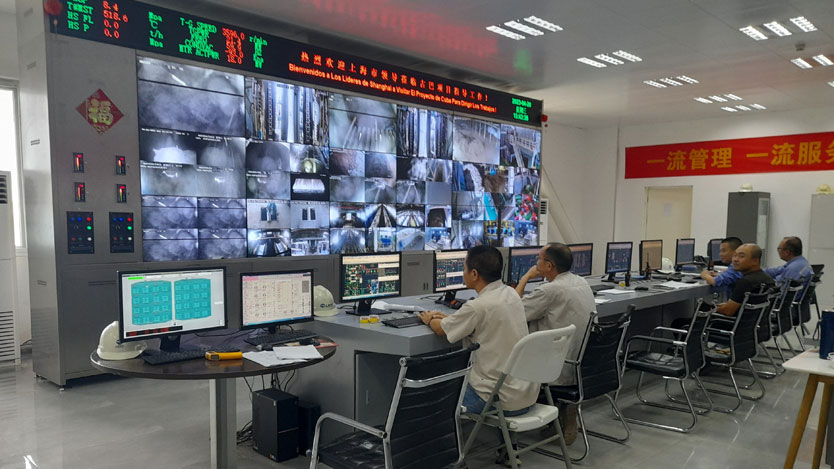After not a few setbacks, the generation of electricity in the bioelectric plant near the Ciro Redondo factory bears good news: since March 15 the plant has been operating without interruptions, after stopping for almost a month due to a break (due to due to automatic firing by frequency at the beginning of February).

At the close of the first fortnight of April, and counting from the beginning of the harvest, the first bioelectric plant in the country has delivered 48.1 gigawatt/hour to the National Electro-energetic System, in a continuous and stable process, in which the capacity has gradually improved efficiency and the proportions of type of biomass to burn.
Engineer Ariel Díaz Román, plant manager, explained to Invasor that at the beginning of the harvest that proportion was half and half: 50 percent bagasse and 50 percent marabou. However, the most recent data speaks of a 76-24, which allows the bioelectric company to generate during milling time, mainly with bagasse, and can allocate the marabou to continue contributing after the sugar war.
The plant has already accumulated 2,147 hours of continuous operation, in which it has worked with an average load of 30.1 megawatts. To maintain these indicators, it requires a stable cut and supply of forest biomass (marabou) and that Ciro Redondo grinds without interruptions, until he fulfills his sugar plan and the authorities decide.
To achieve these indicators, an intensive maintenance program and technological improvements in the biomass feeding in the boilers were necessary.
Both fronts are very susceptible to a shortage of fuel and spare parts for the cutting machines, which is why Díaz Román cannot be exact when talking about the generation strategy once the harvest is over.
By design, the bioelectric could assume more than 800 tons of forest biomass daily with a park of 10 machines, of which less than half are high-tech.
At the time of publishing this information, some 15,700 tons of marabou and 5,000 tons of bagasse were accumulated, but these figures vary each day.
Hence, attempts are being made to diversify the supply of energy biocarriers, something that was always contemplated in the original project, and that until now had not materialized.
According to the head of the Plant, the bioelectric company signed a contract with a medium-sized private company that will assume the management of energy forests —from the promotion and silvicultural care, to the cutting and delivery of biomass—, with which the enclave from Ciego de Ávila would be much closer to the original concept: to generate clean electricity all year round.
